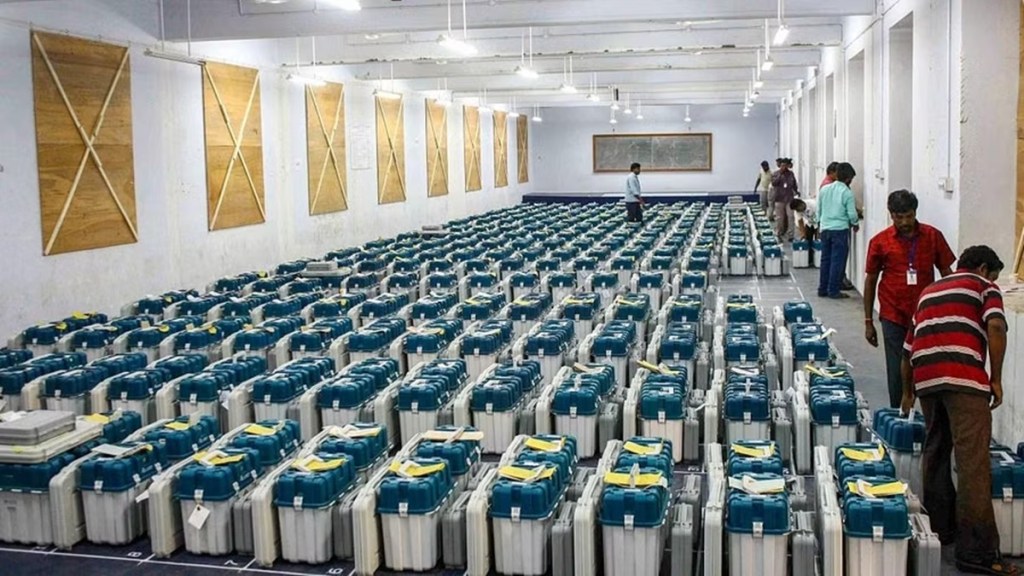The Supreme Court will on Wednesday pronounce its verdict on a batch of petitions seeking directions to tally Voter-Verifiable Paper Audit Trail (VVPAT) slips with votes cast through Electronic Voting Machines (EVMs) during the elections.
A bench of Justices Sanjiv Khanna and Dipankar Datta has also asked an official from the Election Commission of India (ECI) to be present in the court at 2 pm to answer a few queries.
“We just wanted a few clarifications, factually we should be on the page. The microcontroller is installed in the controlling unit or the VVPAT? Please call the officer at 2 pm,” the top court said.
The VVPAT – Voter Verified Paper Audit Trail – enables a voter to see if the vote was cast properly and went to the candidate he/she supports. The VVPAT generates a paper slip that is kept in a sealed cover and can be opened if there is a dispute.
Also Read: “We all know what happened…” says SC as it calls for cross-verification with VVPAT slips
Currently, VVPAT slips of five randomly selected EVMs in every Assembly segment are verified.
Amid the Opposition’s questions and apprehensions regarding the EVM system of voting, the petitions call for cross-verification of every vote.
The petitions have been filed by the Association for Democratic Reforms (ADR) and activist Arun Kumar Agarwal. Agarwal has sought the counting of all VVPAT slips. The ADR’s petition seeks the court’s direction to the Election Commission and the Centre to ensure that voters are able to verify through VVPATs that their vote has been “counted as recorded”.
Earlier this month, the Supreme Court had issued a notice to the Election Commission of India (ECI) on a petition seeking the counting of all VVPAT paper slips in elections, instead of verifying only the five randomly selected EVMs.
The petition challenged the Election Commission’s guidelines that mandate that VVPAT verification shall be done sequentially, that is one after the other, thereby causing undue delay.
It contended that if simultaneous verification was done and an additional number of officers were deployed for counting in each Assembly constituency, then complete VVPAT verification could be done in just five to six hours.
On its part, the poll body has asserted that EVMs cannot be tampered with under any circumstances and that the complete counting of the VVPAT slips was not practically feasible.
During a hearing on April 18, the Commission told the Supreme Court that it was pained by what was said about VVPAT slips in EVMs and underlined that it took “painstaking efforts” to prepare for the elections for the past three years.
It also underlined that all EVMs undergo mock drills before being deployed for elections and that candidates are allowed to randomly pick up 5 per cent of the machines. The ECI said that the process is repeated on the voting day.
Following the Election Commission’s submissions, the Supreme Court told the petitioners that over suspicion of everything is a problem.
“Everything cannot be suspected. You cannot be critical of everything. If they (the ECI) have done something good, you have to appreciate it. You don’t have to be critical of everything,” the bench told the counsel of one of the petitioners.
In an earlier hearing on April 16, the bench expressed reservations about the manual counting process, saying the electoral process in India is a “humongous task” and attempts should not be made to “bring down the system”.

